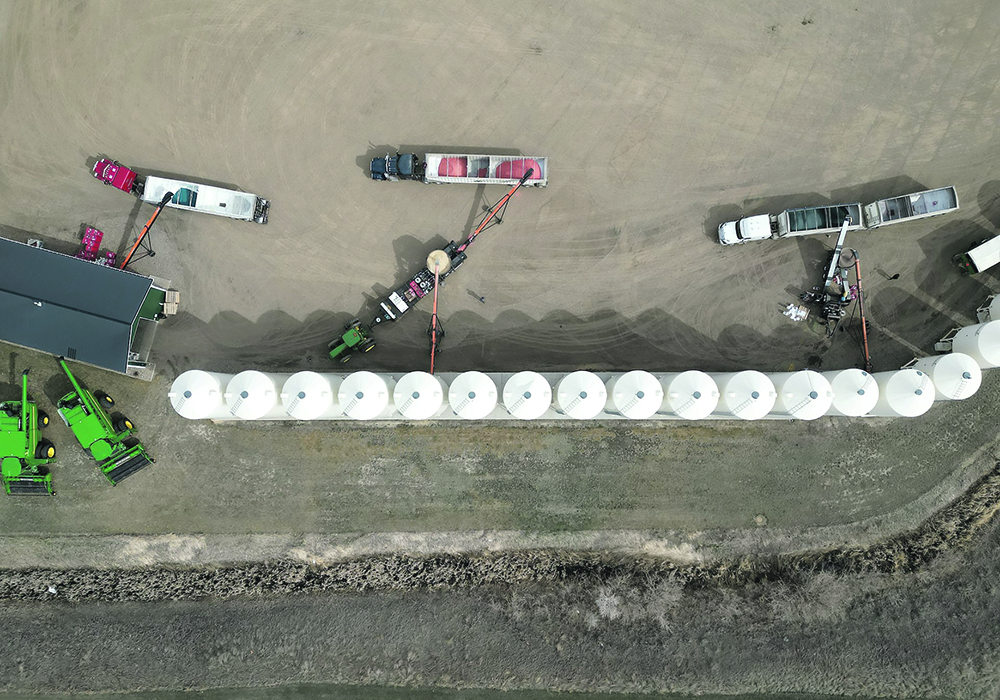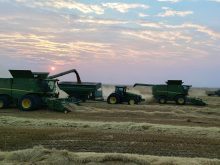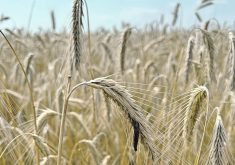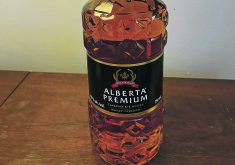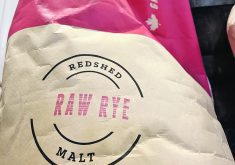This is part of an ongoing series of stories exploring rye, the crop, as it becomes Rye, the whisky.
There’s a problem when a niche crop catches on with farmers.
“It causes you to add more bins and keep growing capacity,” said Enchant, Alta., seed grower Greg Stamp in an interview this spring, as he looked out at three inches of fresh snow that brought blessed moisture to the drought-ravaged region.
Read Also

Trade war may create Canadian economic opportunities
Canada’s current tariff woes could open chances for long-term economic growth and a stronger Canadian economy, consultant says — It’s happened before.
Other stories in this series:
- More producers start growing rye as crop prepares for a recovery
- Farmer finds new uses for old crop of rye
- Rye’s agricultural journey set over thousands of years
Reflecting on his most-of-a-decade experience producing fall ryes as part of his seed business, it was obvious he likes the crop and its unique elements.
The success of the ryes Stamp is able to grow well and that farmer-customers seem to appreciate has much to do with development of the crop into hybrids.
For a century, farmers in Western Canada only had conventional varieties to choose from, and rye became less competitive. Most conventional varieties now are at least 20 years old.
The introduction of hybrid fall rye varieties turned the bad economics on its head. “It’s not the rye you or your parents grew up with,” said Stamp, who grows and sells conventional and hybrid rye.
“The new ryes are very, very different. They’re more like the new wheats.”
Hybrid rye creates a more uniform stand less vulnerable to wind and other weather impacts.
“You get that even, tabletop kind of field,” said Stamp, who has become a big fan of hybrid rye. “Traditional ones are pretty ragged. They’re tall, and they want to fall down on you.”
Offering hybrids that tend to produce a 20 to 40 percent yield boost makes it easier to sell rye.
Some farmers aren’t keen on the higher prices for hybrid seed, nor the fact that they can’t save seeds from hybrid crops. Stamp said greater resiliency of the hybrids in dry conditions means they tend to yield better and survive stresses better, so they have caught on in both irrigated and dryland farming.
On irrigation, most farmers can get 130 to 180 bushels per acre, which outcompetes a lot of wheat options that might bring 90 to 100 bushels.
In most years, Stamp Seeds produces 1,000 acres of rye seed, which is “a pretty good chunk for a niche crop.”
Niche though it may be, Stamp has found that rye has avid growers. Silage producers take 30 to 40 percent of his seed, planting in the fall, chopping in June, then following with a silage oat crop they can cut in the fall.
Others grow it for feed, distilling or food markets. Most aren’t sure where it will go when they seed it in the fall, but the Alberta cattle feed and Manitoba hog feed markets create a steady demand that forms a baseline for values. That removes price volatility suffered by other niche crops.
Brokers tend to offer good marketing opportunities for rye growers, although many farmers have formed long-term relationships with end-users, including ethanol plants, feedlots and distillers, so little rye business goes through the grain elevator system.
Farmers with dedicated, multi-year buyers can get a premium for a good quality crop, so it ends up as a specially marketed crop for many growers.
It’s also specially marketed by seed growers like Stamp. A little rye goes a long way, so he is able to sell to farmers across the Prairies.
At 60 to 70 pounds per acre, “you can get a lot of acres on a truck.” That’s why he’s been able to sell to farmers from Saskatchewan and Manitoba every year he’s sold rye. A load that can seed 1,600 acres has a low freight cost compared to bulkier grains.
Some farmers like to take the crop in tote bags. One tote can seed about 35 acres.
Another advantage for a seed grower like Stamp is that hybrid varieties turn cereal growers into yearly customers. Farm-saved seed is not possible, so more predictable sales come from rye than from some other crops.
However, rye brings the same challenges to seed growers as it does to other growers.
“You’re seeding when you’re harvesting other crops, so it’s a bit of a juggling act,” said Stamp.
It also brings a different type of bin and cash flow management. Some goes very fast. Rye seed can come off the combine and be cleaned, tested and quickly sold to farmers who want to plant it within days or weeks.
“It’s a quick turnaround,” said Stamp about the frenetic harvest pace. “We’re cleaning as we’re harvesting.”
For those immediate sales, cash flow happens quickly. For the rest of the crop, it doesn’t. Some must be binned so farmers can buy it the next summer, fall, or year after.
“You often have to carry inventory for a year and a half,” said Stamp. Running a seed rye system is quirky and not the sort of thing every seed grower wants to do. But for the Stamp family, it’s been both profitable and fun, if hair-raising at times.
“The nice thing about niche crops is that not everybody’s in it,” said Stamp.


